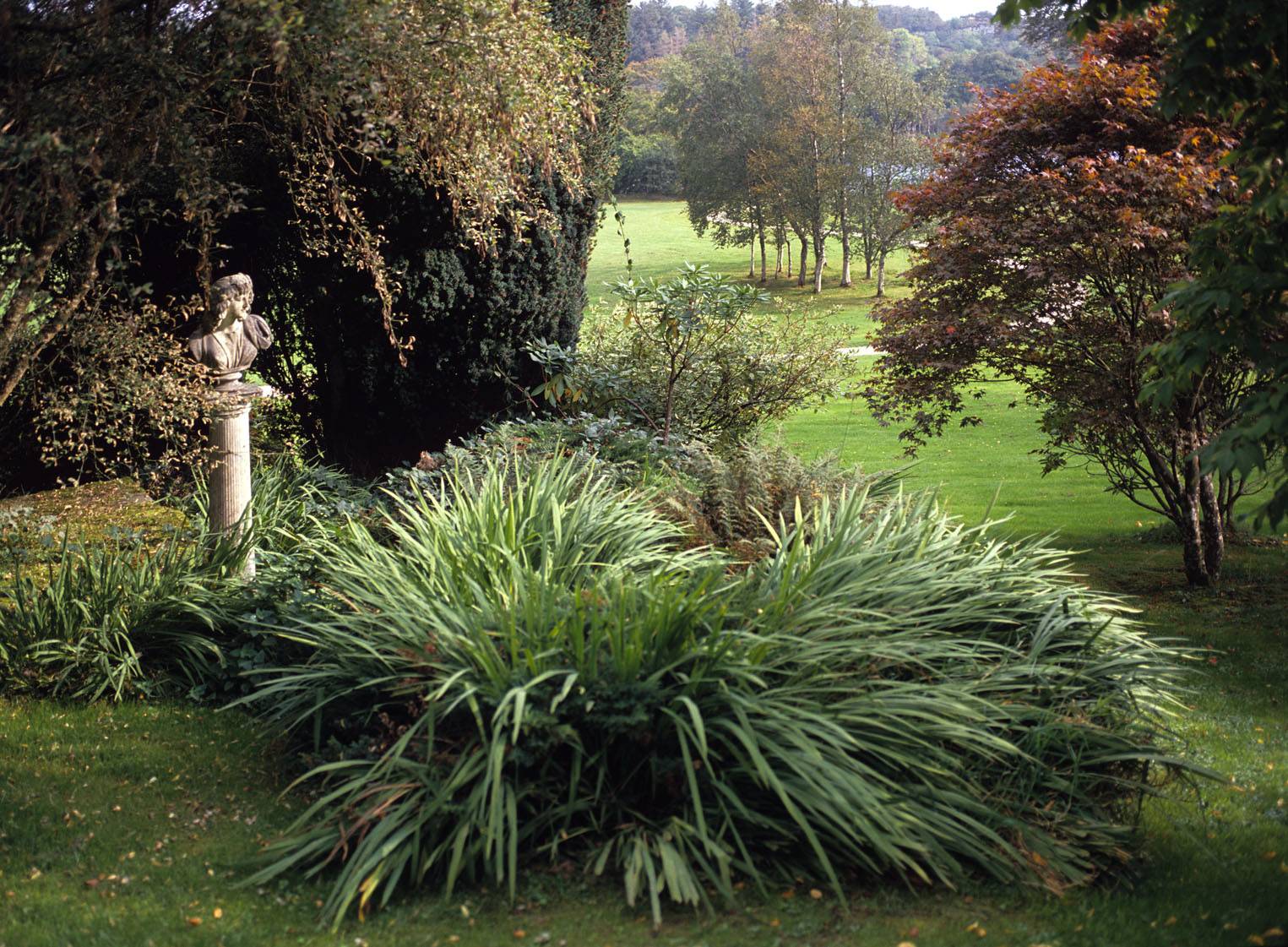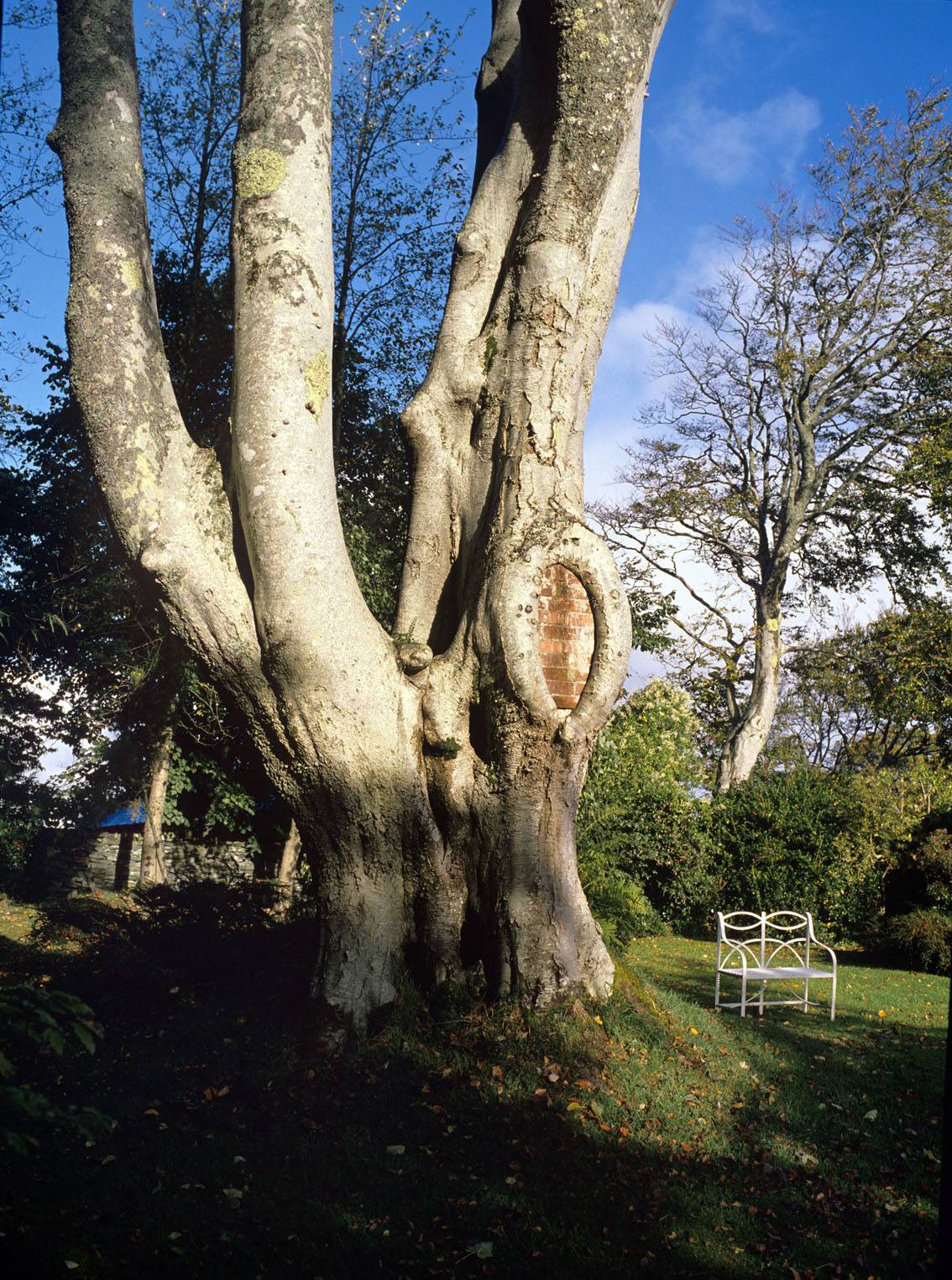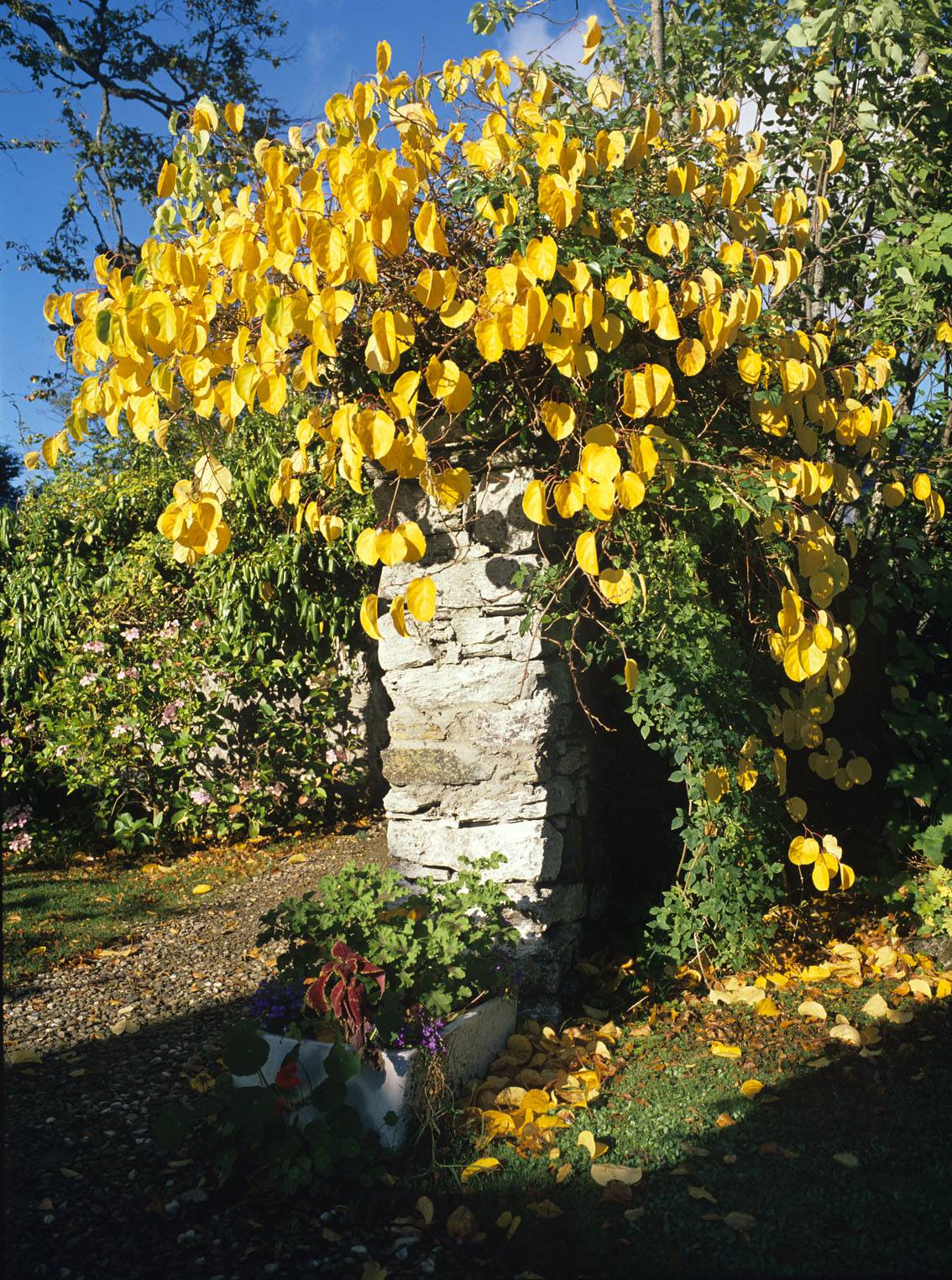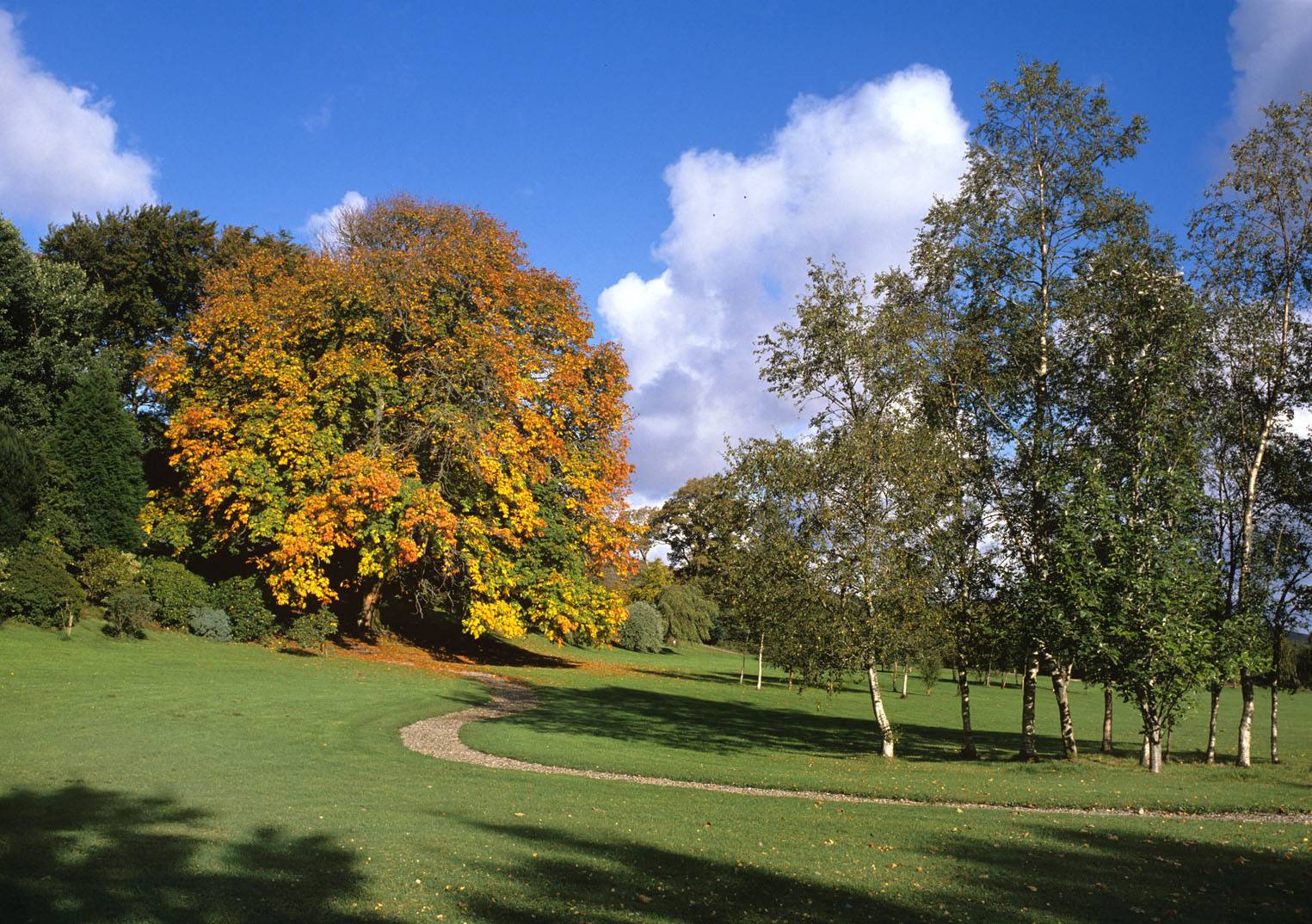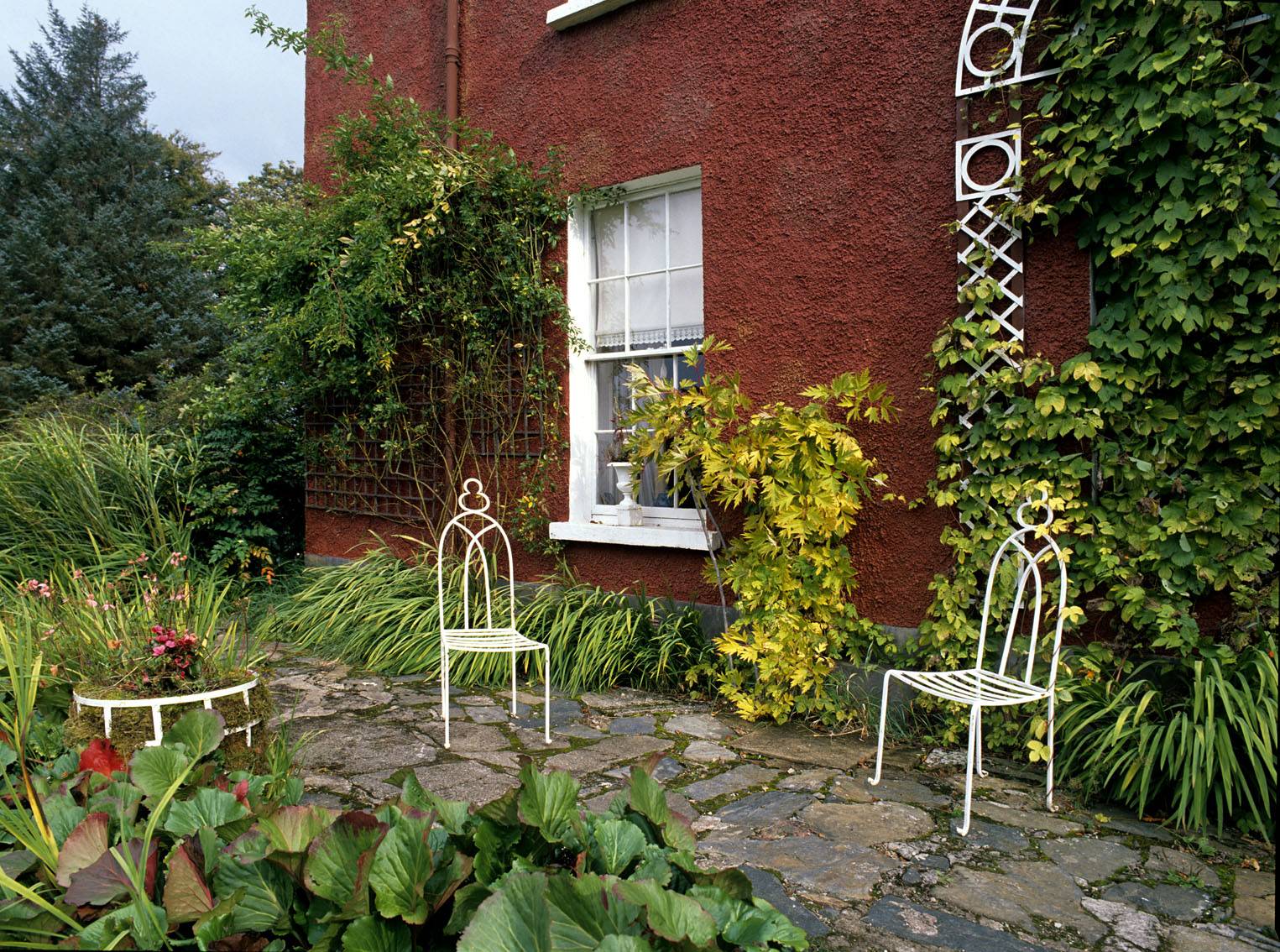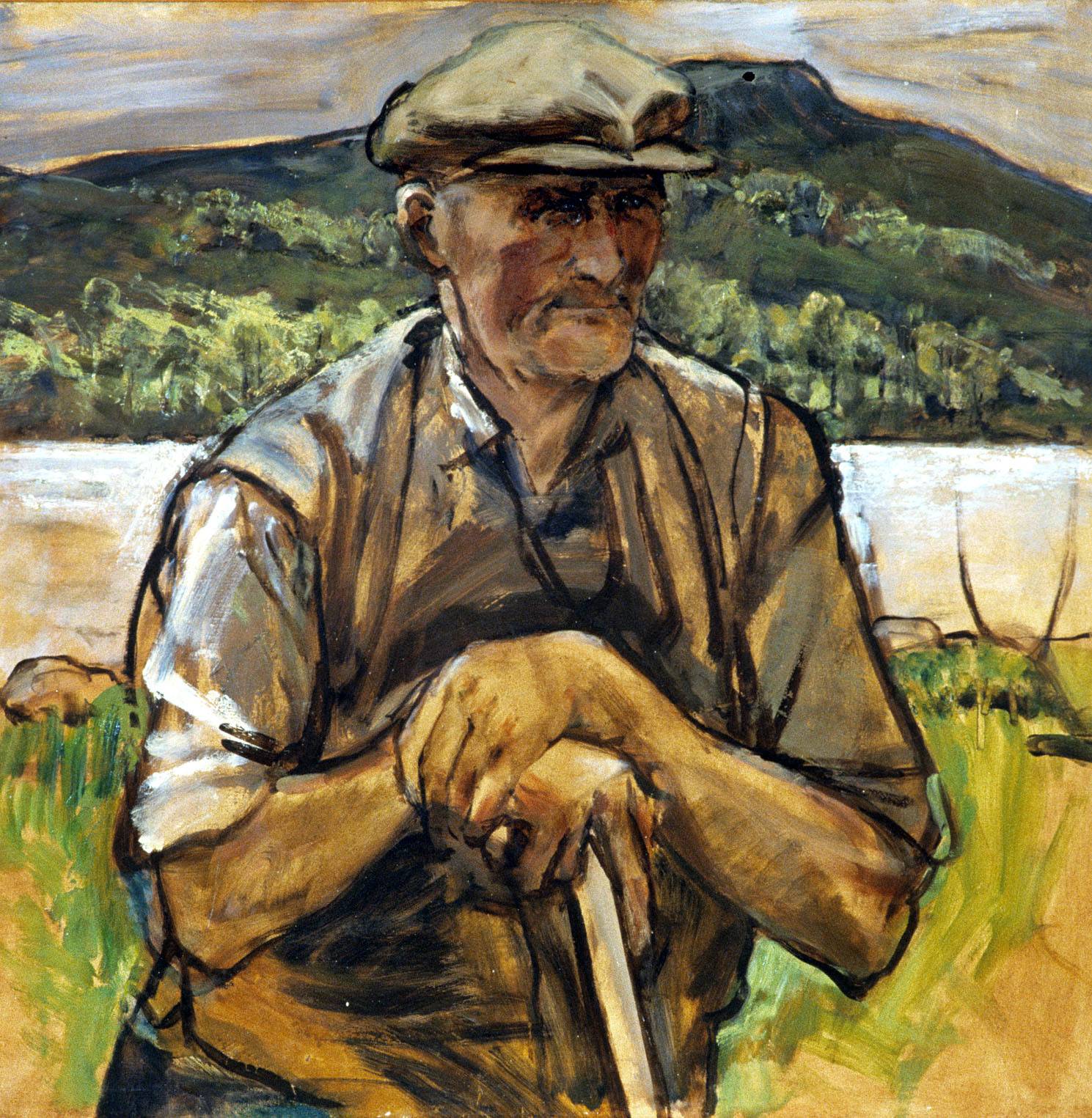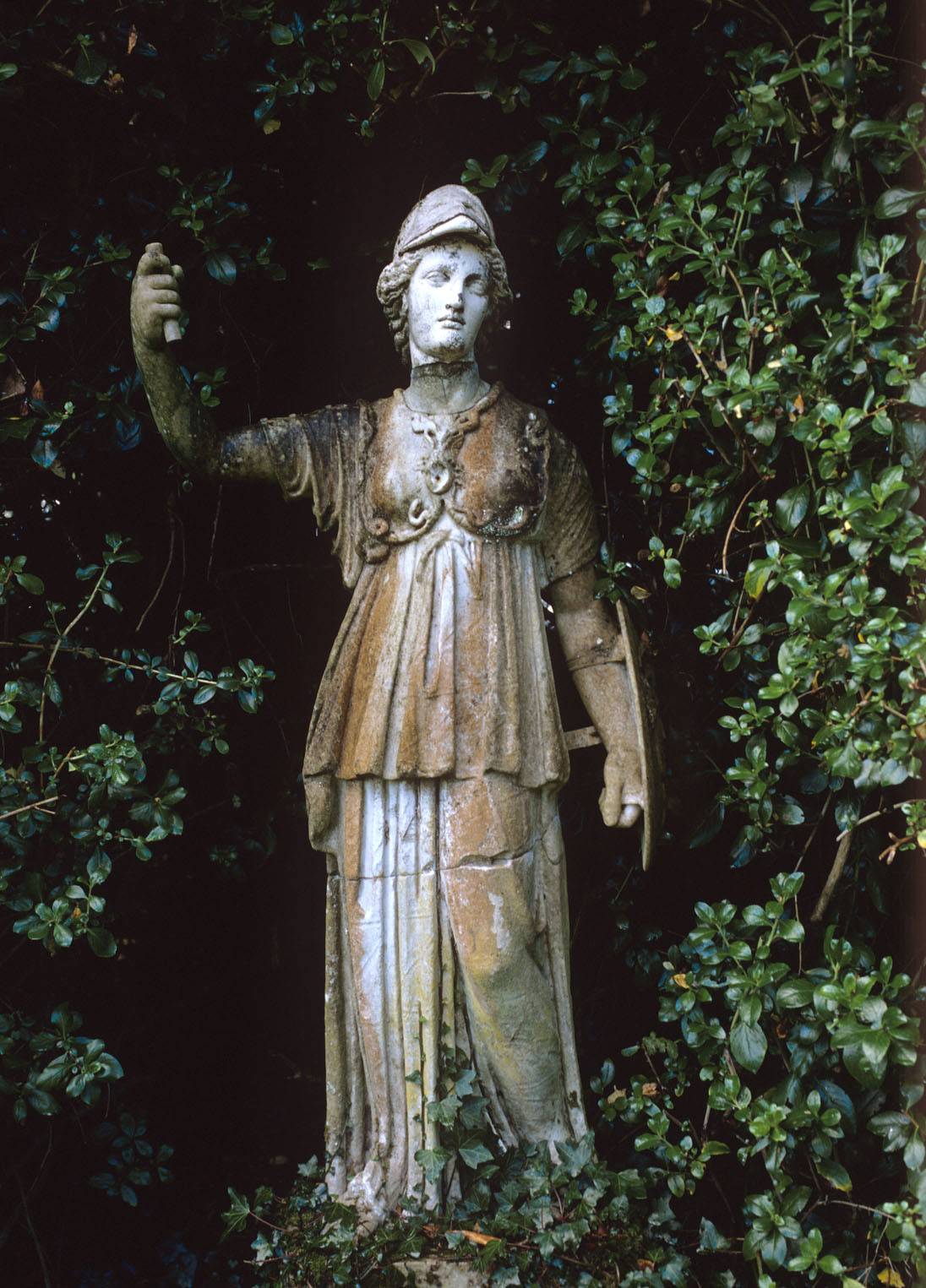The Gardens
by Derek Hill
I contributed an article on “A Painter’s Garden” to the Royal Horticultural Society Journal – May, 1968.
Re-reading what I had then written, I should wish to change very little over my initial planning of a garden and the principles then suggested would still hold today. “Gardens should reflect the landscape they are in”, I wrote. It would have been a complete mistake to make an ordered, severely laid-out garden on the edge of the lake surrounded by hills where St Columb’s stands. I dislike formal beds planted with regimented flowers of the same height and colour. Perhaps my preference for an almost wild garden, reflecting the natural country around it, coincides with the clutter I seem to enjoy in a house – the collection of a lifetime. Similarly in my garden there are plants from everywhere – often gifts from kind botanical friends. Variation and contrast are for me essential; above all contrasts in texture, shape, colour and intensity.
The few busts on pedestals and statues in the garden came from Bishop Hervey’s garden at Castlerock in Co. Derry, and again I have put them where they show up best against a dark background. The white metal chairs and seats around the house itself I designed and got a local blacksmith to make, and the crockery pots inside white painted car-boys is an idea I copied from Cecil Beaton’s garden in Wiltshire. The wrought ironwork came from a house being demolished at Clontibret in County Monaghan and was already the same colour as St Columb’s so went well on the very bare and windswept western side of the house. In winter it is closed-in and heated to house tender plants. Its date is almost exactly the same as that of the house – so again it fits in with the natural environment; as I hope the whole property does. James Russell who now runs the garden at Castle Howard in Yorkshire helped me over the entire project with his great knowledge of what plants would be best in which position, and Eddie Moore, my gardener for many years, on whom I was so dependent, saw that our ideas were all carried out.
